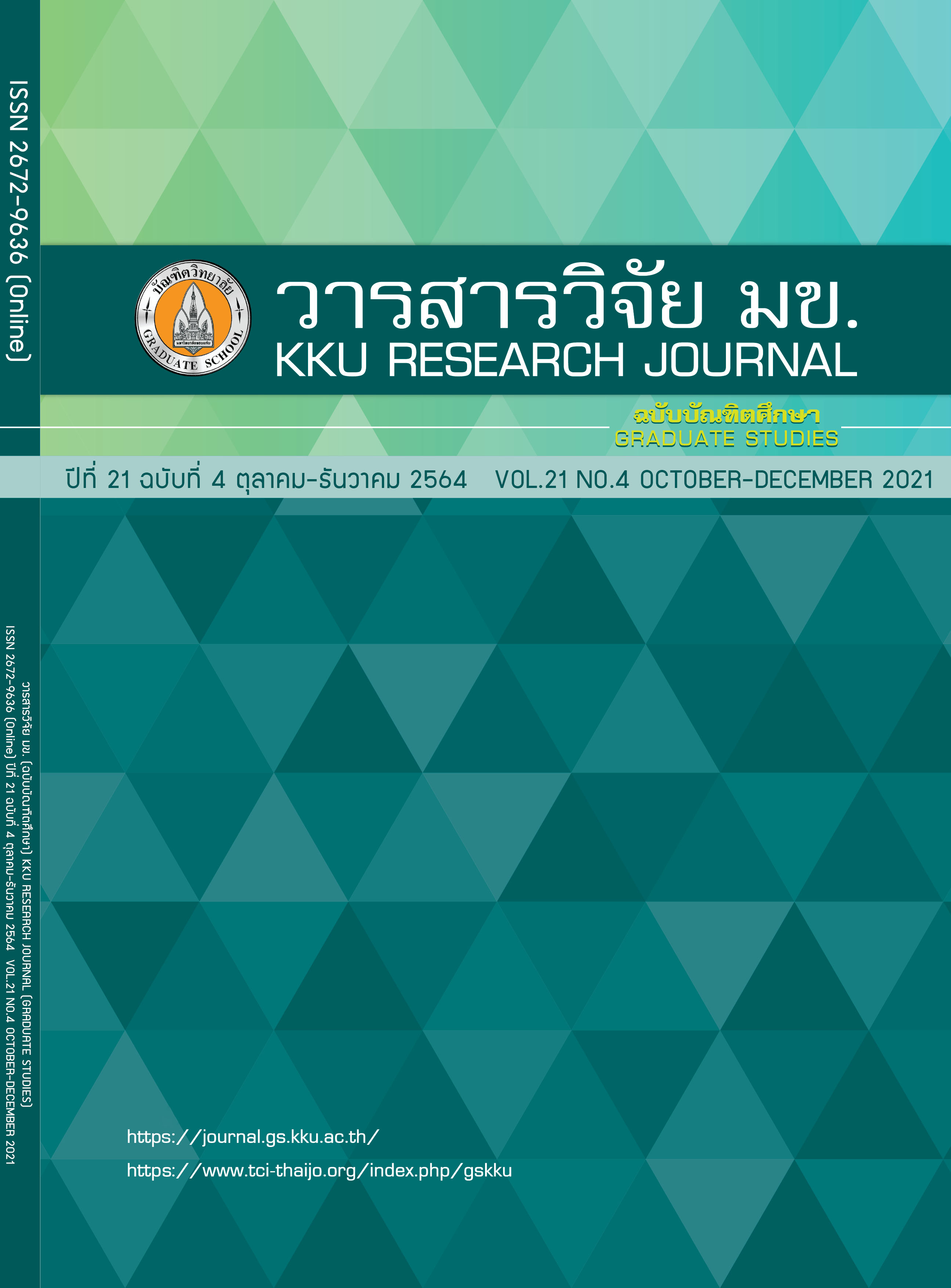สถานการณ์คุณภาพน้ำดื่มในโรงเรียนประถมศึกษา จังหวัดชลบุรี
คำสำคัญ:
น้ำดื่ม, โรงเรียนประถมศึกษา, จังหวัดชลบุรีบทคัดย่อ
ในการศึกษาครั้งนี้ เป็นการวิจัยเชิงสำรวจ มีวัตถุประสงค์เพื่อศึกษาคุณภาพน้ำดื่มจากเครื่องกรองน้ำดื่มของโรงเรียนประถมศึกษา สังกัดสำนักงานเขตพื้นที่การศึกษาประถมศึกษาชลบุรีโดยใช้วิธีการสุ่มแบบหลายขั้นตอน ครอบคลุมพื้นที่ 10 อำเภอของจังหวัดชลบุรี ได้กลุ่มตัวอย่างจำนวน 33 โรงเรียน วิเคราะห์ข้อมูลด้วยสถิติเชิงพรรณนา ระยะเวลาศึกษา พฤศจิกายน 2560 - กุมภาพันธ์ 2561 ผลการศึกษาพบว่า คุณภาพน้ำดื่มจากเครื่องกรองน้ำไม่ผ่านค่ามาตรฐานจำนวน 25 โรงเรียนคิดเป็นร้อยละ 75.8 โดยพบโคลิฟอร์มแบคทีเรียร้อยละ 48.5 ความเป็นกรดร้อยละ 45.5 ฟลูออไรด์ร้อยละ 6.1 ไนเตรตร้อยละ 3 ตะกั่วร้อยละ 3 และเหล็กร้อยละ 3 พบเชื้อโคลิฟอร์มแบคทีเรียที่หัวจ่ายน้ำดื่มคิดเป็นร้อยละ 12.1 ข้อที่เป็นปัญหาทางกายภาพและสภาพสุขาภิบาลเครื่องกรองน้ำและจุดจ่ายน้ำดื่มมากที่สุดคือ จุดบริการน้ำดื่มมีน้ำขังเฉอะแฉะ จุดบริการน้ำดื่มหัวก๊อกชำรุด และมีภาชนะดื่มน้ำใช้ร่วมกัน คิดเป็นร้อยละ 42.4, 30.3 และ 30.3 ตามลำดับ คุณภาพน้ำดื่มของโรงเรียนที่เกิดการปนเปื้อนสาเหตุหลักมาจากระบบการดูแลรักษาระบบกรองน้ำดื่ม โรงเรียนควรมีผู้รับผิดชอบดำเนินการเรื่อง การล้าง เปลี่ยนไส้กรองเป็นประจำ ควรกำหนดเป็นระเบียบปฏิบัติ จัดทำตารางบันทึกข้อมูลการบำรุงรักษา และควรมีการส่งตรวจวิเคราะห์เป็นประจำ
เอกสารอ้างอิง
Public Relations of Chonburi Province. Chonburi has created a separate plan to prevent drought problem. [Internet].
[updated 2012 Apr 23; cited 2020 Sep 28]. Availble from:
http://www.thailandchonburi.com/index.php?lay=show&ac=article&Id=538794530&Ntype=1. Thai.
Post Today. Department of Industrial Works ordered the shut down of industrial waste plants [Internet]. 2014 [updated 2014 July 7; cited 2020 Apr 1]. Availble from: https://www.posttoday.com/economy/news/305307. Thai.
Spring NEWS. Inspect the factory waste smuggling process [Internet]. 2560 [updated 2017 July 16; cited 2020 Apr 1]. Availble from: https://www.springnews.co.th/thailand/east/69939. Thai.
Rueadaeng C, Habonme A. Food Poisoning Disease. Report of Epidemiology Surveillance, The Office of Disease Prevention and Control 6 Chonburi. 2015. Thai
Department of Health. Management of drinking water in schools. Bangkok: Kaewjaojom Media and Print Center; 2013. Thai.
Danpipat N. Fluoride in drinking water with freckled teeth and participatory problem solving with the community in the Phanom Sarakham district Chachoengsao Province. JHSR 2007; 1(2): 19-27. Thai.
Iamsila S. Surveillance study of drinking water quality in schools. Food and Water Sanitation Journal 2010; 1(3): 7-14. Thai.
Iamsila S, Muattong S, Goitong W, Promkaao S. Management of food sanitation and drinking water in schools. Nonthaburi: Department of Health, Ministry of Public Health; 2004. Thai.
Research and Laboratory Development center. Guide for Sampling, Packaging and Storage of Edible Water Samples for Laboratory Analysis and Testing. Nonthaburi: Department of Health, Ministry of Public Health; 2017. Thai.
Department of Health. Health Promotion School Operation Manual B.E.2558. Nonthaburi: Bureau of Health Promotion, Ministry of Public Health; 2015. Thai.
Detisuddotcom. 5-step water filter VDO Installation method [Internet]. 2020 [updated 2020 Apr 22; cited 2020 Sep 29]. Availble from: http://www.dtsood.com/index.php?mo=3&art=42258221. Thai.
World Health Organization. pH in Drinking-water. Revised background document for development of WHO Guidelines for Drinking-water Quality [Internet]. 2007 [cited 2020 Sep 29]. Available from: https://www.who.int/water_sanitation_health/dwq/chemicals/ph_revised_2007_clean_version.pdf
World Health Organization. Guidelines for drinking-water quality, 4th edition [Internet]. 2017 [cited 2020 Sep 29]. Available from: https://www.who.int/water_sanitation_health/publications/drinking-water-quality-guidelines-4-including-1st-addendum/en/
Inoue Fujio. Microbes and production hygiene control in the food industry. Bangkok: Technology Promotion Association (Thailand-Japan); 2003. Thai.
Gertpratum S. Why is the water filtered with the RO system more acidic? [Internet]. 2018 [updated 2018 ; cited 2020 Sep 29]. Availble from: http://www.aqua29shop.com/article/5/ทำไมน้ำที่ผ่านการกรองด้วยระบบ-ro-จึงมีความเป็นกรดมากขึ้น
Yujing H, Jia W, Yao T, Lingqiao W, Hui L, Lan L, et al. Low-mineral Direct Drinking Water in School may Retard Height Growth and Increase Dental Caries in Schoolchildren in China. Environ. Int. 2018; 115: 104-9.
Pinky T, Pawan L, Pranav N, Jeroen HJE. The risk of cancer as a result of elevated levels of nitrate in drinking water and vegetables in Central India. J water health 2017; 15 (4): 602–14.
Mary HW, Rena RJ, Jean DB, Theo MK, Peter JW, Bernard TN, et al. Drinking Water Nitrate and Human Health: An Updated Review. Int. J. Environ. Res. Public Health 2018; 15, 1557: 1-31.
Department of Groundwater Resources. Study to increase the efficiency of the groundwater quality improvement system (FINAL REPORT), Deewhite plus publisher; 2012. Thai.
Editorial team. Food and water sanitation news summary. Food and Water Sanitation Journal 2019; 10(2): 47. Thai.
Nuanchuen K. Risk management of contamination of drinking water in schools in Ang Thong Province. Food and Water Sanitation Journal 2018; 9(1): 10-9. Thai.



